JEE Advanced Previous Year Questions (2018 - 2024): Current Electricity | Physics for JEE Main & Advanced PDF Download
2024
No Question in JEE Advanced Exam from Chapter Current Electricity in Year 2023 !
2023
No Question in JEE Advanced Exam from Chapter Current Electricity in Year 2023 !
2022
Q1: Two resistances R1 = XΩ and R2 = 1Ω are connected to a wire AB of uniform resistivity, as shown in the figure. The radius of the wire varies linearly along its axis from 0.2 mm at A to 1 mm at B. A galvanometer (G) connected to the center of the wire, 50 cm from each end along its axis, shows zero deflection when A and B are connected to a battery. The value of X is ____________. [JEE Advanced 2022 Paper 2]
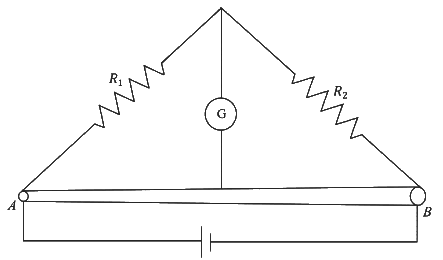
 View Answer
View Answer 
Ans: 5
Solution: According to the given condition wire is having different cross-section at two junction. (Frustum shaped conductor)
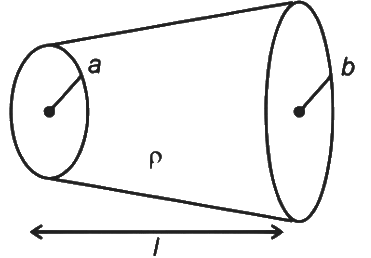

For the shown conductor in the diagram.
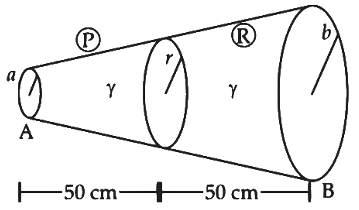
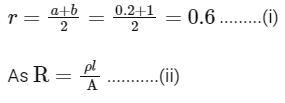
Hence, Resistance of left 50 cm wire

Resistance of Right 50 cm wire

For wheatstone balanced condition,
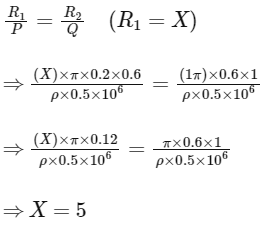
Q2: In the following circuit  . The charge stored in C3 is ____________ μC. [JEE Advanced 2022 Paper 1]
. The charge stored in C3 is ____________ μC. [JEE Advanced 2022 Paper 1]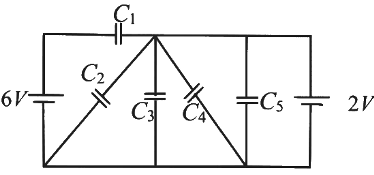
 View Answer
View Answer 
Ans:
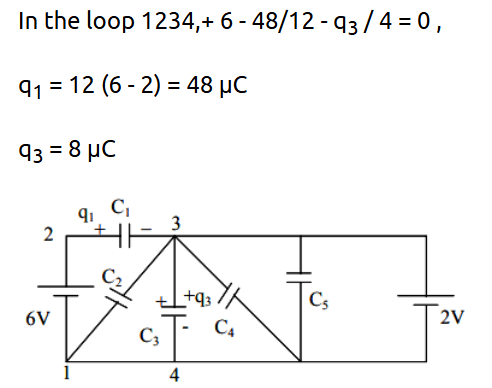
Q3: The figure shows a circuit having eight resistances of 1Ω each, labelled R1 to R8, and two ideal batteries with voltages ε1=12 V and ε2=6 V.
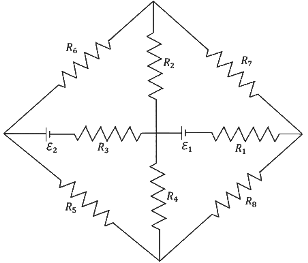
Which of the following statement(s) is(are) correct?
(a) The magnitude of current flowing through R1 is 7.2 A.
(b) The magnitude of current flowing through R2 is 1.2 A.
(c) The magnitude of current flowing through R3 is 4.8 A.
(d) The magnitude of current flowing through R5 is 2.4 A. [JEE Advanced 2022 Paper 1]
 View Answer
View Answer 
Solution: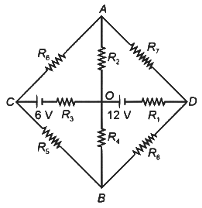
Point A and B are at same potential so they can be merged/folded.
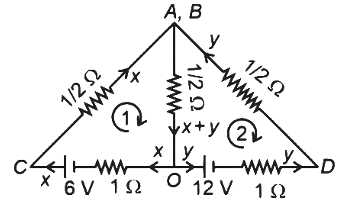
For loop 1
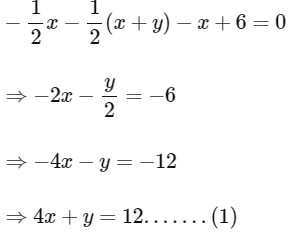
For loop 2
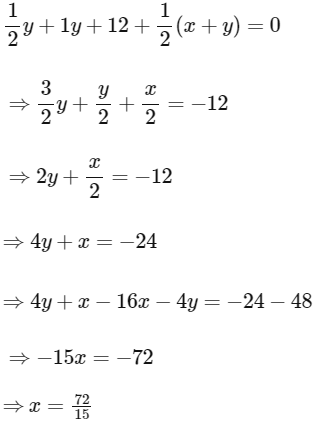
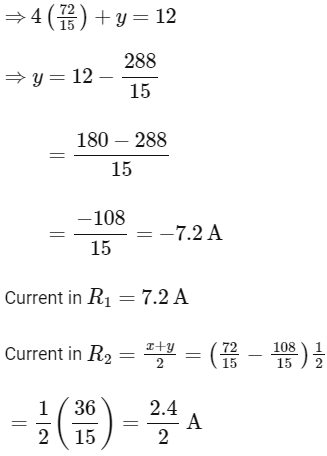
= 1.2 A
Current in R3 = 24/5 = 4.8A
Current in R4 = 12/5 = 2.4A
2021
Q1: In order to measure the internal resistance r1 of a cell of emf E, a meter bridge of wire resistance R0 = 50Ω, a resistance R0/2, another cell of emf E/2 (internal resistance r) and a galvanometer G are used in a circuit, as shown in the figure. If the null point is found at l = 72 cm, then the value of r1 = __________ Ω. [JEE Advanced 2021 Paper 2]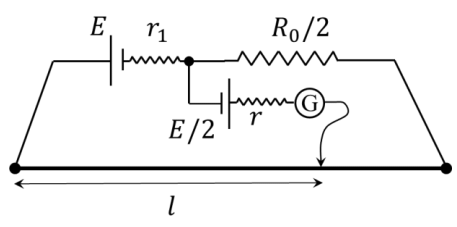
 View Answer
View Answer 
Ans: 3
Solution:
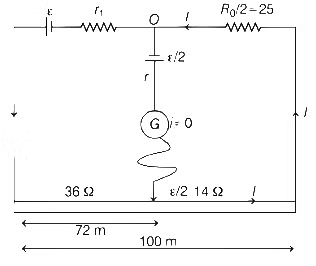 Resistance of potential wire, R0 = 50Ω
Resistance of potential wire, R0 = 50Ω
Resistance of 100 m wire = 50Ω
So, resistance of 72 cm wire = 50 / 100 × 72 = 36Ω
Current, 

2020
Q1: In the balanced condition, the values of the resistances of the four arms of a Wheatstone bridge are shown in the figure below. The resistance R3 has temperature coefficient 0.0004∘C-1. If the temperature of R3 is increased by 100∘C, the voltage developed between S and T will be ________ volt. [JEE Advanced 2020 Paper 2]
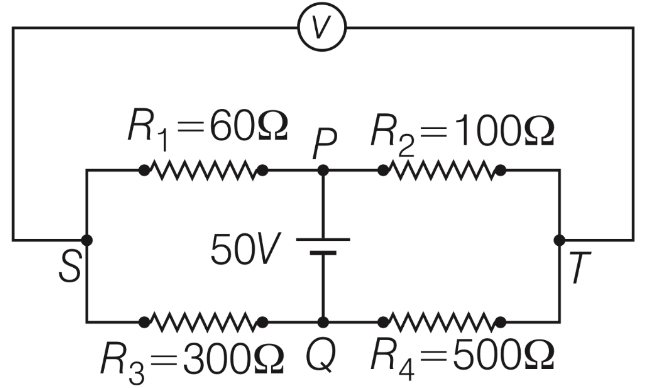
 View Answer
View Answer 
Ans: 0.27
Solution:
Now,
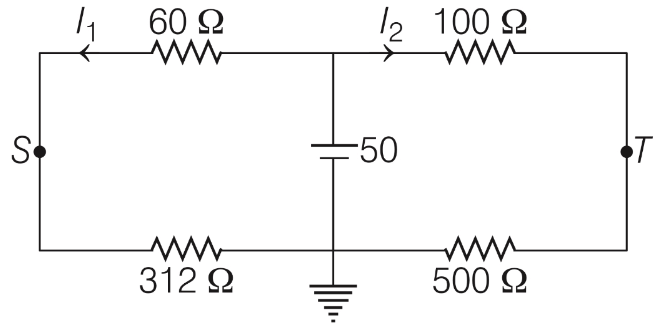
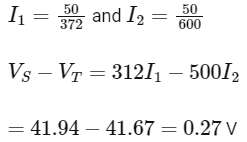
Q2: Shown in the figure is a semicircular metallic strip that has thickness t and resistivity ρ. Its inner radius is R1 and outer radius is R2. If a voltage V0 is applied between its two ends, a current I flows in it. In addition, it is observed that a transverse voltage ΔV develops between its inner and outer surfaces due to purely kinetic effects of moving electrons (ignore any role of the magnetic field due to the current). Then (figure is schematic and not drawn to scale) [JEE Advanced 2020 Paper 1]
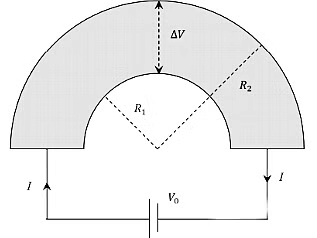
(a) 
(b) the outer surface is at a higher voltage than the inner surface
(c) the outer surface is at a lower voltage than the inner surface
(d) 
 View Answer
View Answer 
Ans: (a), (c) & (d)
Solution: 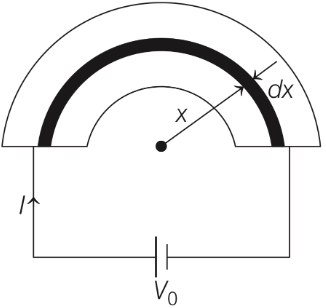
All the elements are in parallel.
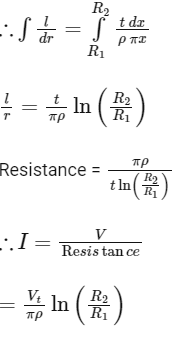
So, Option (a) is correct.
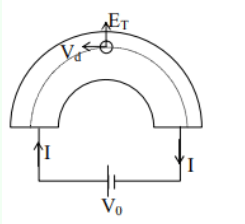
Electrons are revolving in a circular path so there is a centripetal force on the electron, which provide a transverse electric field.
The direction of transverse electric field is radially out side hence inner surface is at higher potential.
So, option (C) is correct.
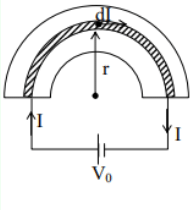
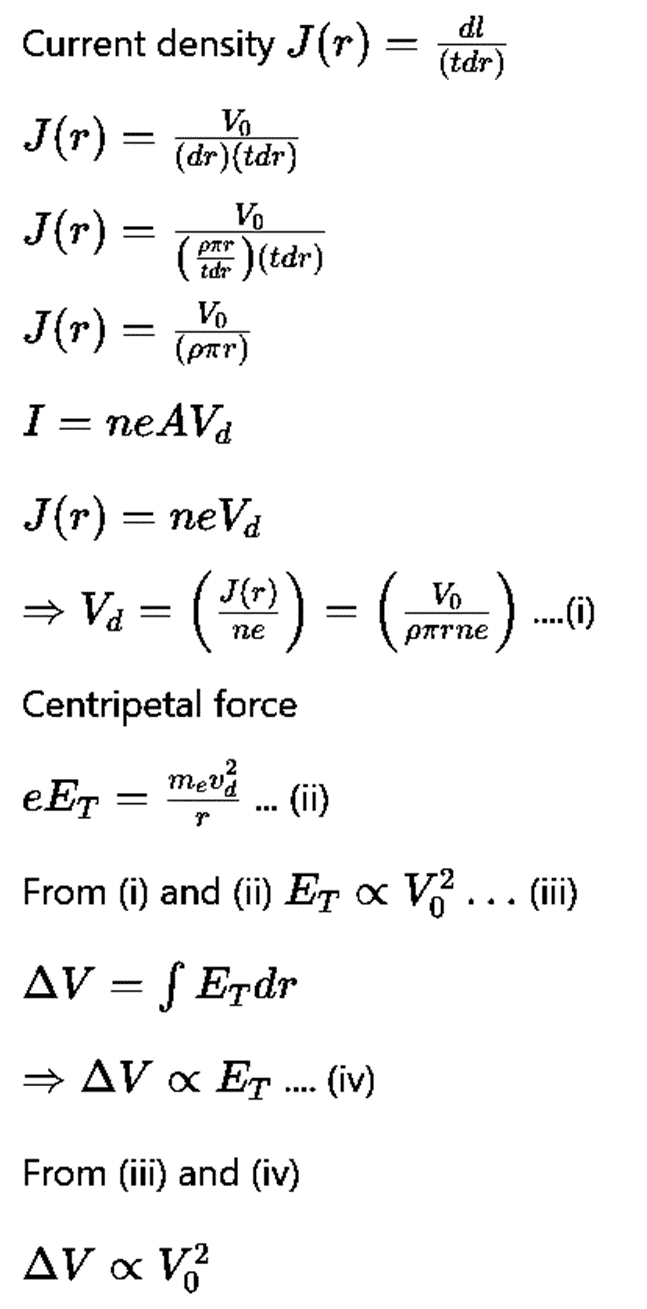
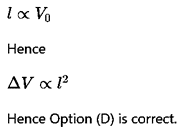
2019
Q1: A parallel plate capacitor of capacitance C has spacing d between two plates having area A. The region between the plates is filled with N dielectric layers, parallel to its plates, each with thickness,  . The dielectric constant of the mth layer is
. The dielectric constant of the mth layer is  . For a very large N(>103), the capacitance C is
. For a very large N(>103), the capacitance C is  .
.
The value of α will be______
[∈0 is the permittivity of free space.] [JEE Advanced 2019 Paper 1]
 View Answer
View Answer 
Ans: 1
Solution: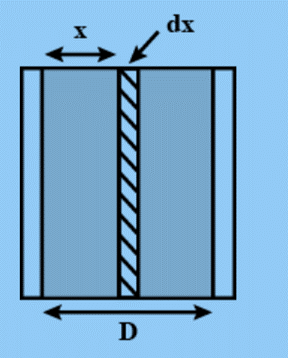 Parallel plate capacitor,
Parallel plate capacitor,

Integration on both sides, we get

Therefore, α = 1.
Q2: In the circuit shown, initially there is no charge on the capacitors and keys S1 and S2 are open. The values of the capacitors are C1 = 10μF, C2 = 30μF and C3 = C4 = 80μF.
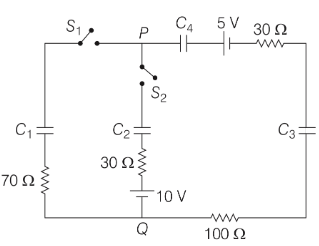
(a) The key S1 is kept closed for long time such that capacitors are fully charged. Now, key S2 is closed, at this time, the instantaneous current across 30Ω resistor (between points P and Q) will be 0.2 A (round off to 1st decimal place).
(b) If key S1 is kept closed for long time such that capacitors are fully charged, the voltage across the capacitor C1 will be 4V.
(c) At time t = 0, the key S1 is closed, the instantaneous current in the closed circuit will be 25 mA.
(d) If key S1 is kept closed for long time such that the capacitors are fully charged, the voltage difference between points P and Q will be 10 V. [JEE Advanced 2019 Paper 1]
 View Answer
View Answer 
Solution: Just after closing of switch charge on any capacitor is zero.
∴ Replace all capacitors by conducting wires.
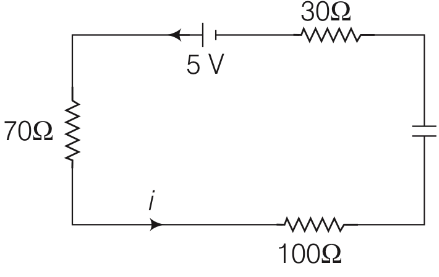
Current flow in the circuit,
At steady state for S1 closed is

At steady state potential difference between 'P' and 'Q' is 4 volt.
Now when switch S2 is closed (Then equivalent circuit)

|
268 videos|740 docs|171 tests
|
FAQs on JEE Advanced Previous Year Questions (2018 - 2024): Current Electricity - Physics for JEE Main & Advanced
| 1. What is the principle behind Kirchhoff's laws in current electricity? |  |
| 2. How do you calculate equivalent resistance in series and parallel circuits? |  |
| 3. What is Ohm's Law and how is it applied in circuit calculations? |  |
| 4. What are the factors affecting the resistance of a conductor? |  |
| 5. How can the concept of electric power be defined and calculated in a circuit? |  |
















